Text
Whole house water filter system: what is the advantage?
Now we are all concerned about the safety and health of our water sources, especially the water we drink. Due to environmental degradation and other reasons, many people no longer trust the city water that comes out of their home or business faucets. There are several options to ensure healthy water comes out of your own faucet, and this includes whole house water purification systems. But what exactly does such a system consist of? And what are its benefits? This article will give you the answer.
What is whole house water filter system?
A whole house water filter is a filtration system that treats water where the main water line enters your home, ensuring the water that flows from every faucet, every showerhead, and even in your washing machine, is clean and filtered. They are gateways for your tap water, and allow only fresh, filtered water to flow to your faucets and appliances.
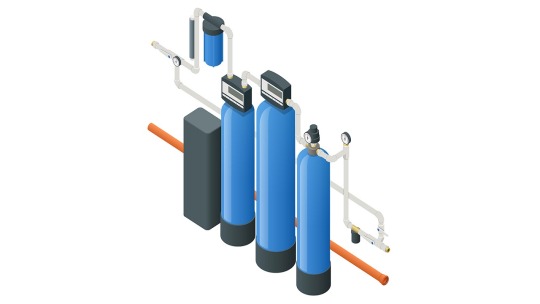
What’s the advantages of whole house water filter system?
Removes contaminants
Whole house water filtration systems can remove many dangerous substances known to cause various diseases. It is best to have your water tested so that you can choose the proper system for your area's needs.
Improve taste&smell
Contaminants may cause tap water to have a bad odor or weird taste. For example, the presence of hydrogen sulfide may cause the odor of rotten eggs, or other dissolved solids may give the water the odor of wood or dirt. These tastes or odors can reduce the taste of drinking water, and the added contaminants can lead to spoilage during use. A whole house filter can help eliminate these substances, including those in well water. As a result, your entire home's water supply will smell better, especially the drinking water.
All-in-one water filtration system
Home filtration systems do not require separate home filters in different locations in your home. Potential contaminants are captured before they reach any indoor source available for home use.
This also makes it easier to keep up with maintaining or replacing a home water purifier. Maintenance with only one activated carbon filter, UV filter or sediment filter may be easier to remember and may prove more economical.
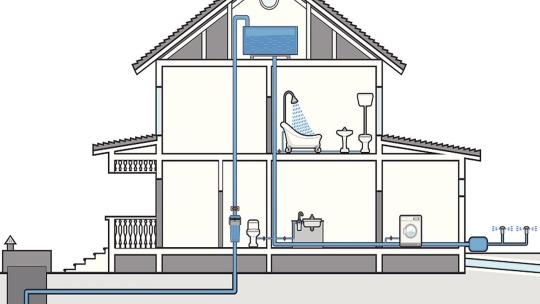
The common filtration systems whole house water filter system
Spin down sediment filter
A spin down filter is made to capture large particulates like sand or rust chunks from a decomposing well. It's designed to do the heavy lifting. Unlike a fine micron sediment filter, a spin-down filter is designed to trap large chunks of debris and sand.
Central water filter
For the whole house water filtration treatment, effectively remove the residual chlorine, heavy metals (such as lead, mercury, arsenic, chromium, etc.), bacteria and impurities, rust, sand, various organic matter and chemicals in the water, the water is clear after filtration, and prevent bacteria from invading the human body.
Central water softener
The softener removes the calcium and magnesium ions in the water, soften the water quality, prevent the scale caused by pipeline obstruction and equipment damage, provide more comfortable domestic water, such as bathing, beauty, etc., effectively save the amount of detergent, soft clothes after washing, bright color.
0 notes
Text
What is the effect of mercury on skin?
Mercury is a metallic element and a common contaminant in water. Like other heavy metals, the hazards of mercury and methods of removal have long been a concern. Some people may wonder what the dangers of this metallic element are. And how to remove this heavy metal from water? This article will tell you the answer.
What is mercury?
Mercury is one of the most well-known heavy metals. Mercury in nature exists mainly in the form of mercury sulfide, which is insoluble in water and non-toxic. The concentration of soluble mercury in natural water bodies is generally low, and the bottom and biological tissues can be enriched with mercury.
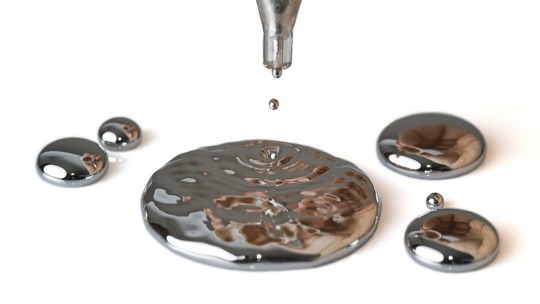
What is the effect of mercury on skin?
I believe many women understand that adding heavy metals such as lead and mercury to cosmetics is harmful because lead and mercury are both heavy metals that cannot be absorbed by the body and can only be accumulated in the body. Some cosmetics with obvious effects are likely to be those with excessive mercury, so it is best not to buy them for the sake of effect.
Pigmentation
The use of mercury-containing cosmetics can make the skin fair in the short term, but long-term use of excessive mercury cosmetics will lead to pigmentation and brown spots on the skin.
Skin diseases
Long-term use of excessive mercury cosmetics will not only bring harm to the skin, but also may induce skin diseases. For example, allergic dermatitis, skin cancer, etc.

How to reduce mercury in water?
Distillation
Water distillation systems work by removing most of the solid contaminants dissolved in water through boiling and condensation. There are smaller systems that can be placed on the kitchen counter, but they are limited to producing small amounts of water per day. In terms of cost of use, the removal of mercury from water by distillation is somewhat more expensive than reverse osmosis systems because of the electricity used to boil the water.
Lime softening
Lime softening involves the use of Ca(OH) to increase the pH of the water, causing heavy metal contaminants to precipitate out in the form of Hg(OH). This method of mercury removal is also used as a remedy for water hardness, removing calcium and magnesium as precipitates. Lime softening is also cost effective and reliable.
Water filtration system
1) Reverse Osmosis
Reverse osmosis water filters work by forcing water through a membrane that blocks larger ions, such as lead and mercury. The common semi-permeable membrane material used is a polyamide membrane. This membrane allows only water molecules to pass through. There are also portable reverse osmosis systems, often called point-of-use systems, that can be conveniently installed near your home's kitchen sink. This process produces high quality water.
2) Carbon Filters
Activated carbon filter is one of the more commonly used filters in households, mainly through the adsorption function of activated carbon for water filtration, a process that naturally removes large molecules of heavy metals, but this method also has its own limitations. The first is that the filtration speed will be slow, and the second is that the filtration precision can not meet the needs of various life. However, it is now common to use under-sink filtration systems that combine activated carbon with other filtration technologies to remove other common contaminants such as mercury, lead, volatile organic compounds and chlorine.
0 notes
Text
What is the effect of water quality on skin?
Have you noticed that your skin may be a little dry and also have some problems that you wouldn't have before? This is when you should consider what the water quality is doing to your skin! You may have heard of "hard water" in your home. It refers to the high levels of magnesium and calcium in your water. These minerals can have a negative effect on your hair, skin and nails. They can also have a significant impact on other areas of your home. You may notice things like buildup on appliances, faded clothing, and stains in the toilet or bathtub. If these minerals can wreak havoc on several hard materials in your house, imagine what it can do to your skin. Using a water filter or other product can help solve this problem.
What is the water pollution?
Water pollution occurs when harmful substances—often chemicals or microorganisms—contaminate a stream, river, lake, ocean, aquifer, or other body of water, degrading water quality and rendering it toxic to humans or the environment.
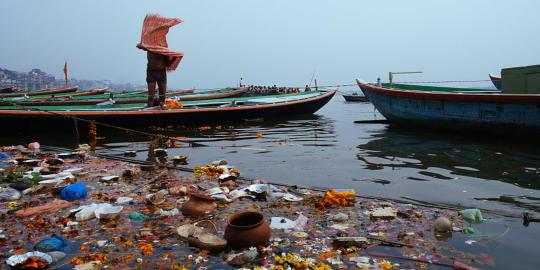
What’s the effect of water pollution on skin?
When water contamination occurs, it can cause the hardness of the water to rise, and if you have eczema, psoriasis or other skin conditions, hard water can make these symptoms worse. Washing with this water over time can also lead to severe acne. The water itself doesn't always cause breakouts or acne, but it certainly has the ability to aggravate it, make it worse, and your hair will also be harmed when the quality of your water is low. Have you noticed that your skin breaks down more easily than normal? Well, low quality water can negatively affect your skin because its pH level can lead to severe breakouts. Hard water can also cause your scalp to become itchy and dry, resulting in this embarrassing and uncomfortable condition. If you are experiencing any of these symptoms, the next step is to have your water tested.

How to deal with the effect of water quality on skin?
Test your water quality
Once you understand how water quality affects your skin, it's important to take the appropriate steps. If you notice that your skin is particularly dry or your hair no longer has that shine, then the next step is to have your water tested. Test the results and then treat the problem and use the right treatment system for it. If the situation allows, it is best to use professional testing equipment, or ask a professional organization to test the water and issue a test report. But you could also assess this is by sight, taste and smell. To assess the odor, color and taste of tap water, compare each indicator to what you would observe in a distilled water sample. If your home drinking water has an unpleasant odor, color, or taste compared to distilled water, your home drinking water supply may be contaminated.
Using water filtration system
Water filters are one of the most cost-effective methods of dealing with water pollution, and there are a wide variety of water filters on the market with a variety of functions. For example, activated carbon filters that work by adsorbing chlorine molecules to the surface of the carbon, reverse osmosis systems also remove chlorine by blocking large molecules of chlorine as water passes through a semipermeable membrane.
0 notes
Text
What do water filters remove?
Water filters can be very effective at removing a range of contaminants from your water, but what a water filter can remove really depends on the type of filter you use. The first thing you need to know is that a water filter is not a panacea, it cannot remove 100% of all impurities, but by using a combination of treatments it can filter 99.99% of them. By using a combination of these types of filters, along with one or more other treatment methods, you can remove almost anything from the water.
What is water filter?
Water filters remove impurities by reducing water contamination using fine physical barriers, chemical processes or biological processes. Filters purify water to varying degrees for purposes including: providing agricultural irrigation, accessible drinking water, public and private aquariums, and safe use of ponds and swimming pools.
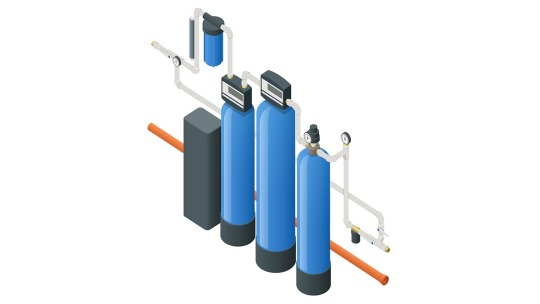
What do water filters remove?
There are hundreds of physical, chemical, biological and radioactive elements that are removed by water filters, including lead, chlorine, bacteria, calcium, minerals, salt and carcinogens. Most drinking water purification methods are designed to remove most of these contaminants. Several of these contaminants are critical to water quality.
Sand, Silt, and Sediment
Most pure physical water filters remove dirt, silt, sand, and sediment from the water. These filters are part of most types of water treatment systems because large particles can easily damage more delicate water treatment equipment, such as reverse osmosis membranes.
Chlorine
Chlorine is widely used as an effective sanitation agent. While it works great, it often leaves behind an unpleasant taste and smell. Chlorine has also been shown to increase cancer risks by as much as 93%. Chlorine alone is not the whole problem; it is the combination of chlorine with other compounds in our water. Chlorine can also cause stomach issues by eliminating beneficial bacteria and precipitating a weakened immune system.

Radium
Radium is a radioactive material found naturally in the earth. Radium offers no smell or taste to announce its presence. Instead, this poison silently enters our bodies and replaces calcium. This process leads to bone degradation. Exposure to radium can lead to nausea, vomiting, fatigue, hair loss, and of course, cancer.
Different kinds of water filter
Carbon filters
Carbon filters are commonly deployed in home water filters, such as those you might place over a faucet, under a sink or in a kettle. This type of filter works well to attract and adsorb contaminants, removing them from the water. This material does not require electricity to work and is cost effective, but it falls short when it comes to removing minerals and dissolved organic matter.
Reverse Osmosis system
In this method, they work by filtering water through tiny pores that allow only water molecules through, keeping contaminants out. This type of reverse osmosis filtration system is very effective at eliminating harmful contaminants from water.
However, they have the disadvantage that they tend to be more expensive than other types of water purifiers and require high water pressure to operate.
Ultrafiltration
Ultrafiltration filter system is one of the membrane separation technologies that uses pressure as a driving force. It aims at separating large molecules from small molecules. It can effectively remove colloid, suspended solids and more impurity and absorb the smell and taste in water.
0 notes
Text
Filtered water vs. Distilled water: can filtered water replace distilled water?
Drinking water is an important part of our daily life, but what kind of water should we choose? And if there are any differences between them? Distilled and filtered water are some of the options, but choosing between them can be complicated. There are various factors that influence the choice between these two types of safe drinking water.
What is filtered water?
Water filtration is performed using several different methods. Filtration is one of the most effective methods for purifying water. It involves using a filtration medium with microscopic holes, which allows it to block any matter larger than the size of those holes, some of which are toxins and other harmful substances. Very well-filtered water earns the “purified” label if it achieves a ratio of less than 10 contaminant parts per million.
One advantage of filtered water compared to distilled water is that it retains the dissolved oxygen in the source liquid. This gives it a little more life than when you drink it directly or boil it for coffee or tea. Common water filtration systems like RO systems, carbon filter, Ultrafiltration, etc.
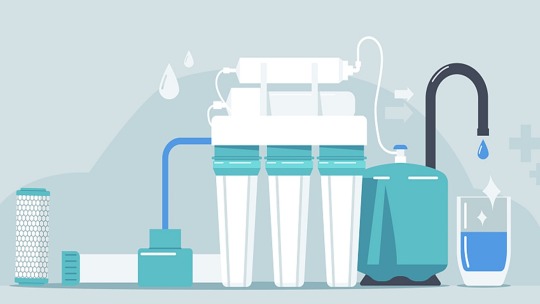
What is distilled water?
Distilled water is pure, clean, and free of impurities or bacteria after being treated by electrodialyzer method, ion exchanger method, reverse osmosis method, distillation method and other appropriate processing methods. This kind of water is usually sealed in a container, and contains a small amount of carbonic acid carbohydrates, colorless and transparent, and can be drunk directly. Distilled water is the most commonly used purified water in the laboratory. In this process, most impurities in the water can be removed, except for some organic and volatile impurities, such as carbon dioxide, silicon dioxide, and ammonia. Fresh distilled water is sterile, but bacteria are prone to multiply after storage, so long-term storage is not recommended.
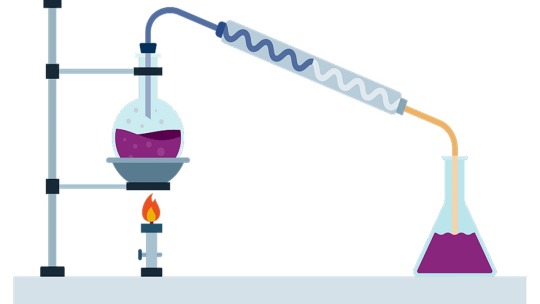
Filtered water vs. Distilled water: which one is better?
After understanding the definition of these two types of water, then which type of water is best for you? Distilled water or filtered water? According to experts, there is no one-size-fits-all answer when it comes to choosing the best type of water to drink. The answer to this question is influenced by many factors.
Typically, most people do not prefer distilled water. This is because it lacks naturally occurring minerals that are beneficial to our health, and it can put individuals at greater risk for nutritional deficiencies. In addition, drinking distilled water may even cause problems with your teeth. This is because experts say that the minerals in your teeth can leach into mineral-deficient water, and for this reason, it is usually not recommended.
When it comes to filtered water, there are many variations and having a certain level of minerals in the water can be beneficial to our health. This depends largely on the level of filtration used, as well as the water source. For example, some filtered water retains minerals that can provide a healthy daily intake of calcium and magnesium. For this reason, many people prefer to drink filtered water rather than distilled water.
0 notes
Text
What kind of water filter can remove chlorine and chloramine?
What is chlorine and chloramine?
Before discussing this issue, we must first have a certain understanding of chlorine and chloramine. First of all, chlorine is a non-metallic element that exists in places like seawater and the earth's crust in various forms. In our daily life, we are more familiar with its state as a liquid form of a cleaning agent. Chloramine is a chemical variant of chlorine that contains ammonia, and is generally safe to drink and use around the home in the same way traditional, chlorine-treated tap water would be.

How to deal with chlorine in water?
Boiling
How long to boil water to remove chlorine? Boiling for at least 15 minutes will release the chlorine, which is probably the easiest way to remove chlorine, but it is not particularly suitable for all drinking water, because it is generally drunk or used after cooling.
Cooling
Another way to deal with chlorine is to cool it. You can place an open container of tap water in the refrigerator and the chlorine will evaporate over time. But depending on the amount of water, you may need 24 hours or longer. You can also let water sit to remove chlorine, but it may take longer time.
Ultraviolet light
Ultraviolet light can also be used to disinfect water, which removes chlorine from the water. This method works by destroying chlorine molecules. However, due to its high price, it is not widely used in households.
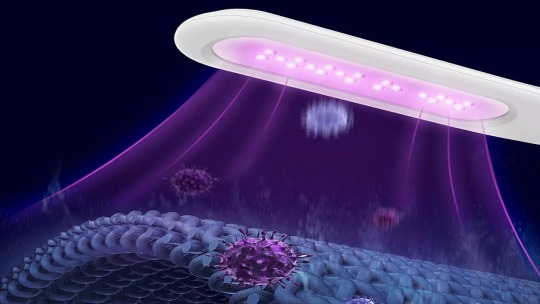
Water filtration system
Compared with other methods, the most efficient and simple way is to use a water filtration system to filter the water. There are many different types of water purifiers on the market. You need to choose a water filtration system that is suitable for your family and can remove chlorine. For example, activated carbon filters that work by adsorbing chlorine molecules to the surface of the carbon, reverse osmosis systems also remove chlorine by blocking large molecules of chlorine as water passes through a semipermeable membrane.
The water filter that can remove chlorine and chloramine
Activated carbon filtration
There are various ways of removing chlorine and chloramine from water. Carbon filtration is an effective way to absorb the various contaminants in water, including chlorine and chloramine.
Reverse osmosis
The reverse osmosis filtration is a high-tech water treatment, considered to be the most effective water filtration technology out there. It features 0.0001-micron pore size, intercepting any contaminants larger than that size. This means that only water particles can pass through the RO membrane. It's thorough not only for chlorine and chloramine, but for eliminating several other common contaminants.
Ultrafiltration system
The ultrafiltration water filter system is also efficient at chloramine reduction. It depends on 0.01-micron ultrafiltration membrane to intercept most contaminants. The ultra-filtration filter combines with the activated carbon filter to deliver a double protection system that ensures excellent reduction. While its filtration accuracy is not as good as RO membrane, an ultra-filtration water filter is an affordable and effective alternative to remove chlorine and chloramine from water.
0 notes
Text
How to test the water quality at home?
Are your tap water safe enough? There are a number of reasons you might decide to have your water tested, whether you’re connected to a public water supply, you’re suffering from hard water issues, or you use untreated well water. It’s important to know the different options for water testing, as well as what things you should be looking for in your water. This article will show you all the things you should know about water testing.
Why test your water quality?
Water is vital to life. But water that has contaminants can cause adverse health effects. Types of water contaminants include physical contaminants (such as sediment), chemical contaminants (such as nitrogen, pesticides and salt), biological contaminants (such as viruses and bacteria) and radiological contaminants (such as uranium).
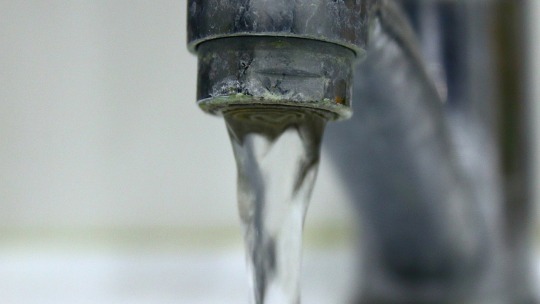
These contaminants that may not only be harmful to human health but can potentially cause issues like plumbing damage, hard water stains, and more. While the water source and local health department regulations may impact the quality, water quality testing can also be essential to determine whether you need a water filter, and choose what kind of filters, like the Reverse Osmosis System or carbon filter.
How to test water quality?
Color, Taste, and Odor Test
The first and most visual way to assess this is by sight, taste and smell. To assess the odor, color and taste of tap water, compare each indicator to what you would observe in a distilled water sample. If your home drinking water has an unpleasant odor, color, or taste compared to distilled water, your home drinking water supply may be contaminated.
Water Hardness Test
The hardness of water describes the total concentration of dissolved calcium and magnesium solids in the water sample. If the hardness of water is to be tested, the following methods can be used:
1) Pour tap water into a long-handled spoon or large ladle
2) Place a spoonful of water on the counter and leave it undisturbed for 24 to 48 hours
3) After the water evaporates, see if there are any white spots or sticky residue in the spoon
4) If you observe residue after the water has evaporated, you may have a hard water problem in your home. Filtering hard water is critical to a safer water supply.
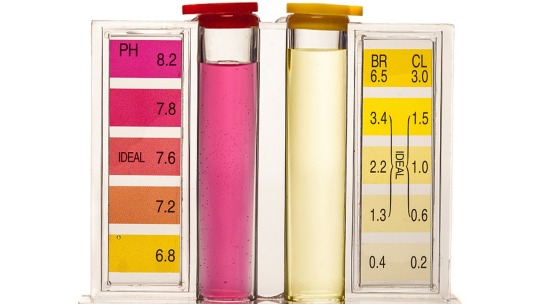
Boiling
Boiling is also a water quality test often used in the home , all you need to do is thoroughly clean and dry a small pot or saucepan, then fill the pot with water and place the pot on the stove top and heat the water without a lid until it comes to a boil. Once most of the water has evaporated, turn off the heat. Wait for the pot to cool completely then run your fingers along the bottom of the pot. If you feel a gritty, sticky or chalky residue, your home water supply contains dissolved solids.
0 notes
Text
Hard water vs. soft water: Do you have hard or soft water?
Water, the thing we use everyday. While do you really know about this important hydrate? You may know that there are hard water and soft water, but what are the two kinds of water? What’s the difference of the two kinds of water? This article will show you the answer!
What is hard water&soft water?
Hard water is called hard water because it is rich in minerals such as calcium, iron and magnesium. As water flows from its source to your tap, it collects tiny particles along the way. If these particles contain a lot of hard minerals (calcium and magnesium, to be precise), the water will harden. The more of these minerals there are, the harder the water will be. While the minerals in hard water are said to be drinkable, hard water flowing through your home may have other negative effects.

Hard water is water with excess calcium and magnesium, while soft water is free from these harsh minerals that can damage your home and body. Soft water has very small to no amounts of the minerals that are found in hard water. Soft water can be found naturally in rainwater, glaciers and icebergs and especially through water treatment. But remember, just because water is naturally occurring doesn’t mean you should drink it without filtration, as it can have bacteria or pollution in it that you can’t see.
What is the effect of hard water?
Effect on health
Drinking water with high hardness for a long time can cause cardiovascular, nervous, urinary and hematopoietic system lesions. Long-term drinking of hard water, will be prone to gastrointestinal dysfunction, abdominal distension, exhaust and other symptoms, increase the burden on the stomach.
Skin&Hair
Hard water can cause dry skin and dry hair, make them . It may feel like you’re washing the soap away, but hard water does not remove soap from your body. This causes the soap to be left behind, absorbing the natural moisture and oils from your skin.
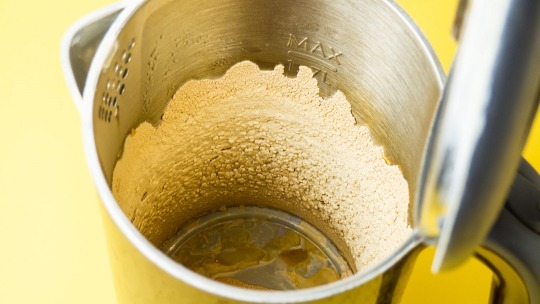
Appliances&Plumbing
The calcium and magnesium molecules in hard water cause scaling (which is a buildup of chemicals). This can happen in pipes, faucets, and appliances, such as dishwashers, washing machines and coffee makers. This scaling will often contribute to a loss of efficiency and premature appliance breakdowns.
How to deal with hard water?
Boiling
For the daily needs of the family, boiling is the simplest and most efficient treatment method. Boiling at high temperature can not only reduce minerals such as calcium, iron and magnesium, but also kill some harmful bacteria and viruses that may exist.
Reverse Osmosis System
The Reverse Osmosis System will split the water as it comes through and take all of the mineral out. You’ll get a litre of waste down the drain and a litre of pure water in your tank.
Hard Water Softener
Hard water softeners remove calcium, magnesium and other metals, extending the life of the plumbing by reducing or eliminating the scale build-up in pipes and fittings.
0 notes
Text
What is the advantages of under sink water filters?
There are many water filters that can meet various water needs, especially under sink water filters that have become quite popular in the past few years, but they are generally more expensive, so people may ask: Is an under sink water filter really worth buying? This article will give you a breakdown of the advantages of under sink water filters and then you will know if it is worth buying.
What is under sink water filter?
An under-sink filtration system is a device that filters water by feeding it through several different filter media. As the name implies, this type of device is installed underneath the kitchen sink. Under sink filtration units typically have two or three different filtration stages. The under-sink filter is connected to your cold water line, so it delivers filtered water from your faucet (or from a dedicated faucet, depending on the type of system you purchased). This means you can get filtered water on demand.
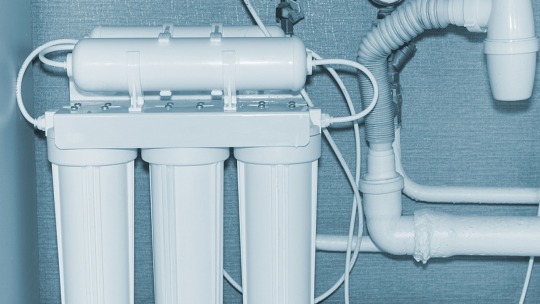
The advantages of under sink water filter
Saving space
One of the most important advantages of using an under-sink water filter is that it has a compact design. Filtered pitchers take up space in your refrigerator, and even the slimmest countertop water filters take up valuable surface area. Since under-sink filters stay under the sink, they’re out of sight and out of the way.
Easy Maintenance
The another advantage of an under-sink filter system is that it’s so easy to maintain. You will periodically need to replace the cartridge, but that’s it! A few minutes is all it takes to keep your drinking water at its best.
Cost savings
Finally, using an under-sink filter can provide you with significant savings. Simple maintenance means you don't have to constantly spend a lot of money on equipment that is good for your home every day. And, when compared to alternatives such as bottled water, it's clear to see that installing a filter is an effective way to save money while still enjoying great tasting water in your home.
Different kinds of under sink water filters
Reverse osmosis system
In this method, they work by filtering water through tiny pores that allow only water molecules through, keeping contaminants out. This type of reverse osmosis filtration system is very effective at eliminating harmful contaminants from water.
However, they have the disadvantage that they tend to be more expensive than other types of water purifiers and require high water pressure to operate.
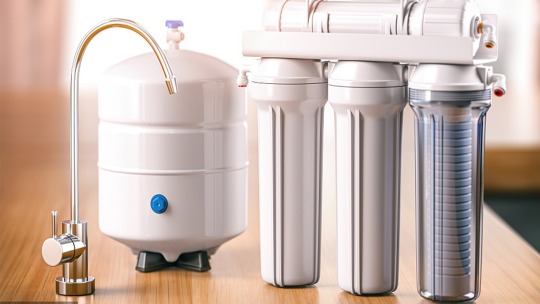
Carbon filters
Carbon filters are commonly deployed in home water filters, such as those you might place over a faucet, under a sink or in a kettle. This type of filter works well to attract and adsorb contaminants, removing them from the water. This material does not require electricity to work and is cost effective, but it falls short when it comes to removing minerals and dissolved organic matter.
Ultrafiltration filters
Ultrafiltration filter system is one of the membrane separation technologies that uses pressure as a driving force. It aims at separating large molecules from small molecules. It can effectively remove colloid, suspended solids and more impurity and absorb the smell and taste in water.
0 notes
Text
What’s the effects that mercury has on human health?
Water is the source of life, if the water quality of heavy metals in excess of the standard, it will endanger human health, the light will cause the human body to develop diseases, and the heavy will cause death. Mercury, one of the heavy metals, can also cause serious problems, especially health problems, if it is in excess. This article will explain what mercury is and what health problems can be caused by excess mercury in water.
What is mercury?
Mercury is one of the most well-known heavy metals. Mercury in nature exists mainly in the form of mercury sulfide, which is insoluble in water and non-toxic. The concentration of soluble mercury in natural water bodies is generally low, and the bottom and biological tissues can be enriched with mercury.
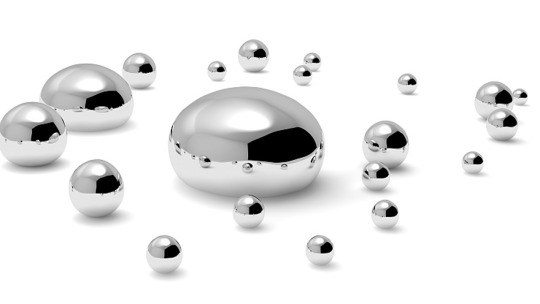
The effects of mercury on human health
Elemental mercury and methylmercury are toxic to the central and peripheral nervous systems. Inhalation of mercury vapor can have harmful and potentially fatal effects on the nervous, digestive and immune systems, lungs and kidneys. Inorganic salts of mercury are corrosive to the skin, eyes, and gastrointestinal tract and may cause renal toxicity if ingested.
Neurological and behavioral disturbances may be observed following inhalation, ingestion, or dermal exposure to different mercury compounds. Symptoms include tremors, insomnia, memory loss, neuromuscular effects, headaches, and cognitive and motor dysfunction. Kidney effects have been reported, ranging from increased protein in the urine to kidney failure.
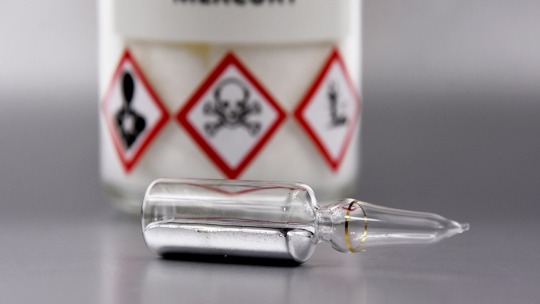
How to reduce mercury in water?
Distillation
Water distillation systems work by removing most of the solid contaminants dissolved in water through boiling and condensation. There are smaller systems that can be placed on the kitchen counter, but they are limited to producing small amounts of water per day. In terms of cost of use, the removal of mercury from water by distillation is somewhat more expensive than reverse osmosis systems because of the electricity used to boil the water.
Lime softening
Lime softening involves the use of Ca(OH) to increase the pH of the water, causing heavy metal contaminants to precipitate out in the form of Hg(OH). This method of mercury removal is also used as a remedy for water hardness, removing calcium and magnesium as precipitates. Lime softening is also cost effective and reliable.
Water filtration system
Reverse Osmosis
Reverse osmosis water filters work by forcing water through a membrane that blocks larger ions, such as lead and mercury. The common semi-permeable membrane material used is a polyamide membrane. This membrane allows only water molecules to pass through. There are also portable reverse osmosis systems, often called point-of-use systems, that can be conveniently installed near your home's kitchen sink. This process produces high quality water.
2. Carbon Filters
Activated carbon filter is one of the more commonly used filters in households, mainly through the adsorption function of activated carbon for water filtration, a process that naturally removes large molecules of heavy metals, but this method also has its own limitations. The first is that the filtration speed will be slow, and the second is that the filtration precision can not meet the needs of various life. However, it is now common to use under-sink filtration systems that combine activated carbon with other filtration technologies to remove other common contaminants such as mercury, lead, volatile organic compounds and chlorine.
0 notes
Text
Tips for choose drinking water filtration system for home
Water is the source of our life. We need it to digest food, expel waste and help every cell in our body to work properly. However, while proper hydration is essential to a healthy life, the reality is that not all water is created equal. This means making sure we are drinking clean water and getting the necessary minerals, which usually requires a good water filter.
Why do we have to choose a water filtration system?
Water pollution around the world is very serious, a long time water pollution can lead to extremely serious consequences, so water pollution must be paid attention to, water filers can reduce water pollution to a certain extent.

Tips for choose drinking water filtration system?
Water Quality Testing
When choosing a water purifier for your home, the most important thing is to know what you want to remove. That means having a water quality test done on your usual drinking water.
1) Water Quality Report
If conditions allow, you can go to a professional testing facility to do a water quality test and then get a professional water quality report.

2) Home Water Test
If you want to know the exact composition of the water coming out of your faucet, consider doing a home water test. You can use it to determine if your water contains harmful bacteria, lead, pesticides, chlorine, nitrates and nitrites. The test will also show the pH and hardness of the water. If your water source is a private well, you should test it twice a year, you can take it to a local lab, or you can do a simple test at home. The home well test will test for all the same constituents as the city water test, as well as iron and copper.
Different kinds of drinking water filtration system
1) Reverse Osmosis System
Reverse osmosis system is an advanced method of water purification. It is a membrane filtration technology that works by forcing water under pressure to permeate very tiny holes in the semi-permeable membrane. Modern reverse osmosis devices for homes combine membrane technology with carbon and mechanical filtration to produce highly purified, excellent tasting water.
2) Ultrafiltration System
Ultrafiltration is a membrane separation process based on the principle of sieve separation and driven by pressure. The filtration accuracy is within the range of 0.005-0.01μm, which can effectively remove particles, colloid, bacteria, heat sources and polymer organic substances in water. This technology can be widely used in the separation, concentration and purification of substances, and has played an increasingly important role in reverse osmosis pretreatment, drinking water treatment, water reuse and other fields.
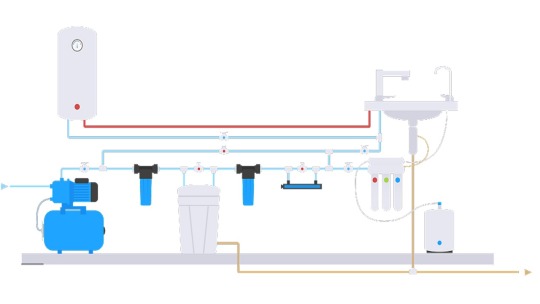
3) Carbon filters
Carbon filters are commonly deployed in home water filters, such as those you might place over a faucet, under a sink or in a kettle. This type of filter works well to attract and adsorb contaminants, removing them from the water. This material does not require electricity to work and is cost effective, but it falls short when it comes to removing minerals and dissolved organic matter.
0 notes
Text
What are the effects of lead in drinking water?
Lead is a heavier metal other than gold and mercury, and as a kind of heavy metal, a small part of lead in the water environment comes from the leaching of natural lead-containing minerals, and most of it comes from the wastewater discharged from lead-containing mines, lead-containing compound smelting and production plants and enterprises. People may wonder what are the effects of lead in drinking water and how to reduce lead in water, even how much lead is safe to consume. This article will answer your question.
What is lead in water?
Lead is a naturally occurring metal that can be found in all parts of our environment – the air, the soil, the water, and even inside our homes. This metal has been used in a wide variety of products found in and around our homes, including paint, ceramics, pipes and plumbing materials, solders, gasoline, batteries, ammunition, and cosmetics.
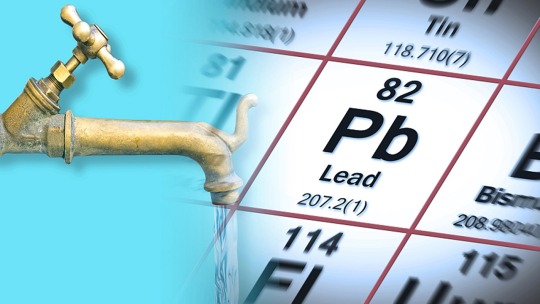
What are the effects of lead in drinking water?
1) Effect on health
How severe the symptoms are depends on the concentration in your body, which is usually highest if you have inhaled lead (for example, in the form of lead dust). Lead poisoning can cause high blood pressure, heart disease, infertility, kidney disease and death. Symptoms include:
Abdominal pain
Constipation
Fatigue
Headaches
Irritability
Loss of appetite
Weakness
Memory loss
Pain or tingling in the hands or feet
2) Bad taste&smell
High concentrations of lead contaminate water, making it cloudy, yellow or brown in color, and producing offensive odors that affect the availability and safety of the water.
3) Biotoxicity
Lead has high toxicity to aquatic organisms. When lead contamination is present in water bodies, aquatic organisms such as fish, plankton, and aquatic plants can be severely affected. Lead can accumulate inside the organisms and disrupt their physiological functions, leading to abnormal growth and development, reproductive problems, impaired immune system, etc.
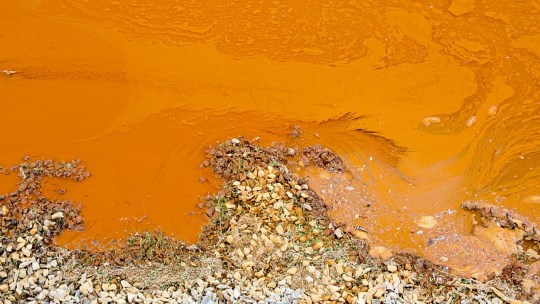
How to reduce lead in water?
1) Distillation
The use of distillation is what most people can think of as method to reduce lead. Distillation is the separation of the components contained in a liquid mixture by using the difference in volatility of the components to partially vaporize the liquid mixture and subsequently partially condense the vapor. Distillation is a very slow process that requires a large amount of energy from a heat source, so it is not the best process.
2) Reverse osmosis system
Reverse osmosis is a simple and economical way to protect your home's drinking water by filtering out contaminants such as lead. Reverse osmosis can remove almost 99.1% of lead from water.
In the reverse osmosis water treatment process, household water pressure pushes water through a series of filters. The membranes in the reverse osmosis system will filter out contaminants, including the removal of lead from the water. Through the reverse osmosis filtration process, impurities are flushed away, leaving you with filtered, clean drinking water.
Reverse osmosis is an efficient purification process that is cost-efficient to produce (only a few cents per gallon), consumes no energy, and is easy to clean and maintain.
0 notes
Text
How to know what is in your tap water?
We drink water every day, and water is the source of life. But what substances does water contain in it after many processes? How can we know what substances are contained in the water? This article will help you to solve these problems.
What substances are in tap water?
The main component of tap water is hydrate, and contains almost negligible chloride ions, disinfection with bleach (sodium chloride, sodium chloride), and some calcium ions, magnesium ions, potassium ions, and some sulfates and other trace minerals. After boiling tap water, most of the magnesium ions and calcium ions become precipitation (scale).

How to know if your water safe?
1) Test tap water by professional test if possible. If conditions permit, the most efficient way is to conduct a professional water quality test on your tap water, which can help you learn the water quality intuitively and accurately.
2) Test tap water by visual and olfactory inspection. The simpler method is to carefully observe whether there are impurities in your tap water, and whether there is sediment after a period of time; you can also judge whether there is any odor by smelling it, but some pollutants with small diameter or odorless may cannot be found.
3)Wash your hands or drink with your tap water. You could just use your tap water for washing hands or take a sip, and if you find your hands any uncomfortable or it taste weird, then it may be unsafe.
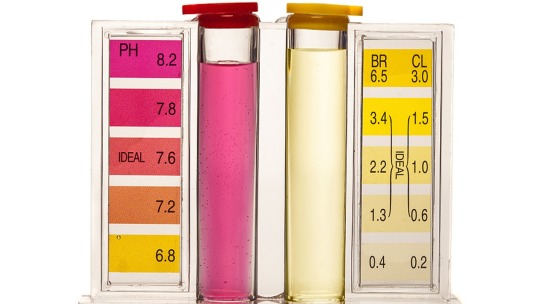
The method to deal with contaminated water?
1) Detect and identify sources of contamination. When you find your tap water is unsafe, the most crucial way is to find the source of contamination, it may result from the industrial pollution, old water pipes and tools, etc.
2) Boil your water to reduce contaminants. This is the most simple way to kill most bacteria and other contaminants. However, boiling does not remove all contaminants, and some contaminants may require more professional treatment. Most of families may boil water for at least one minute before drinking or cooking.
3) Use home water filtration system. Using a water filter at home is definitely the most effective and quickest way to deal with unsafe water. First of all, there are many types and brands of water filter systems you can choose to meet various water needs. For example, various filtration technologies like reverse osmosis system, ultrafiltration system and others for you. Secondly, the installation of most water filters is very simple, like most of the Reverse Osmosis Systems. Finally, some water filters are very simple to maintain, which could save your time and money.
0 notes
Text
What kind of water filter can reduce TDS?
TDS can reflect the level of contamination to a certain extent, so many people will reduce the TDS to achieve the effect of purification. While how to reduce TDS and what kind of water filter can be used to reduce TDS? This article will answer the question for you.
What is TDS?
TDS is the abbreviation of Total dissolved solids, measured in milligrams per liter (mg/L), which indicates how many milligrams of dissolved solids are dissolved in 1 liter of water. Total dissolved solids refers to the total amount of all solutes in the water, including the content of both inorganic and organic matter. The conductivity value is generally used to understand the salt content of the solution, in general, the higher the conductivity, the higher the salt content, the higher the TDS. The higher the TDS, the more dissolved substances contained in the water. Among the inorganic substances, there may be inorganic substances in molecular form in addition to the components dissolved into ionic form. Since organic matter and inorganic matter in molecular form contained in natural water can generally be disregarded, the salt content is also generally referred to as total dissolved solids. However, in some particular water, TDS does not effectively reflect the water quality.
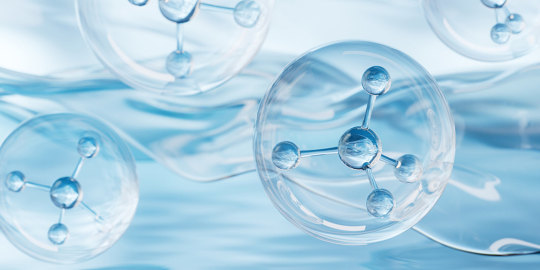
What kind of water filter can reduce TDS?
Reverse Osmosis
Among the many water filtration methods, reverse osmosis is one of the most popular methods for removing total dissolved solids from water, and this method is also the most effective method of reducing TDS in water filters today.Reverse osmosis water filters remove most TDS, including dissolved salts, minerals and hazardous chemicals, down to 0.0005 microns.
Reverse osmosis system is typically installed at point-of-use locations, such as on your countertop or under your kitchen sink. The water flows through several filtration stages, including a carbon-based filter, and is then forced under high pressure through a fine mesh filter called a semi-permeable membrane. Most large molecular impurities cannot pass through the semi-permeable membrane, so they can be filtered off the membrane. Water is discharged from the chamber at a continuous rate, while unwanted impurities are flushed down the drain.

You won't find a better water purifier than an RO system when it comes to reducing TDS to an acceptable level. Using RO technology to filter water is a cost effective long term solution.
Other methods to reduce TDS
There are other ways to reduce the TDS besides using RO water filters to reduce the TDS.
Scale Inhibitor
It is a chemical or mechanical treatment method injected or installed in a fluid flow system to prevent the precipitation and accumulation of slightly insoluble compounds on the inner walls of the system. It is used to reduce TDS in a certain sense by dispersing insoluble inorganic salts in the water, preventing or interfering with the precipitation of insoluble inorganic salts on metal surfaces, and scaling functions. While it is still a chemical substance, so there is some risk.
Deionization
Deionization is a process in which water is passed through a membrane with positive and negative electrodes. This membrane causes the positive ions to separate from the water and move towards the local electrode. The deionization process is combined with a reverse osmosis process that first gets rid of the non-ionic particles before going through the deionization process.
0 notes
Text
What does reverse osmosis remove from water?
As the level of quality of life increases and the developed technology, water quality is becoming more and more important to people and the quality of water filters has become a major concern for some people. Reverse osmosis is widely regarded as one of the most effective methods of water filtration, creating clean, great tasting water. Reverse osmosis systems are used in a variety of applications including whole house filtration, faucets, aquariums and restaurants. But people also wonder what exactly reverse osmosis filters out of the water. This article will answer that question by describing what reverse osmosis is and how it works.
What is reverse osmosis?
Reverse osmosis system is an advanced method of water filtration. It is a membrane filtration technology that works by forcing water under pressure to permeate very tiny holes in the semi-permeable membrane. Modern reverse osmosis devices for homes combine membrane technology with carbon and mechanical filtration to produce highly purified, excellent tasting water.
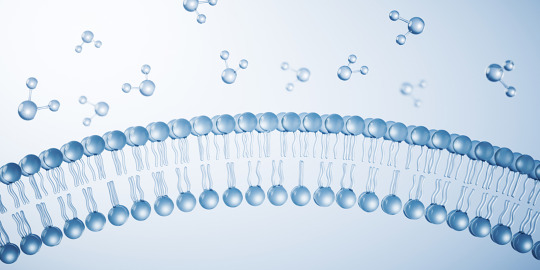
How does reverse osmosis work?
Basically, reverse osmosis works by using high water pressure to force your tap water through a very dense semi-permeable membrane. This membrane has very small pores ranging from 0.1 to 5,000 nanometers.
As the water is forced through this membrane, solid contaminants such as salts, heavy metals and other substances are left behind, but the water molecules are able to pass through the membrane. The solids are then discharged from the filter and the water is fed to your faucet.
Depending on your needs and budget, reverse osmosis systems vary greatly in size and type. A small under sink filter can be used to filter one faucet, a filter can be installed to filter water for several different faucets and plumbing fixtures, or you can install a whole house residential filter that filters all the water that enters your home.
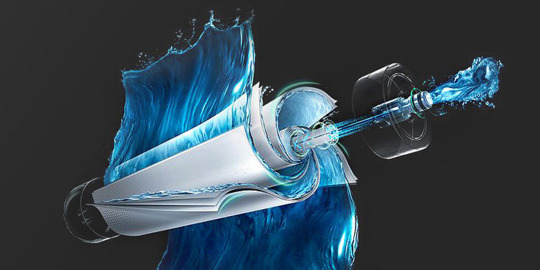
What does reverse osmosis remove from water?
Reverse osmosis systems remove dissolved solids such as fluoride through a reverse osmosis membrane. Reverse osmosis systems also include sediment and carbon filters for extensive emission reductions. The carbon filter in a reverse osmosis system removes chlorine, odors and tastes, while the sediment filter removes dirt and debris.
A few of the common substances that are filtered out of your tap water using reverse osmosis include:
Sodium
Chloride
Copper
Salt
Chromium
Lead
Viruses including e. Coli
Bacteria such as salmonella
If you also have water purification needs and want to choose a quality water purifier, you can choose a reverse osmosis system, I believe you will not be disappointed.
0 notes
Text
How to reduce the TDS in water?
Everyone wants to drink healthy and safe drinking water for themselves and their families, but the fact is that the quality of the water we usually drink is not guaranteed, it may have contamination, but we can not know the degree of contaminants with the naked eye. TDS can reflect the level of contamination to a certain extent, so many people will reduce the TDS to achieve the effect of purification.
What is TDS?
TDS is the abbreviation of Total dissolved solids, measured in milligrams per liter (mg/L), which indicates how many milligrams of dissolved solids are dissolved in 1 liter of water. Total dissolved solids refers to the total amount of all solutes in the water, including the content of both inorganic and organic matter. The conductivity value is generally used to understand the salt content of the solution, in general, the higher the conductivity, the higher the salt content, the higher the TDS. The higher the TDS, the more dissolved substances contained in the water. Among the inorganic substances, there may be inorganic substances in molecular form in addition to the components dissolved into ionic form. Since organic matter and inorganic matter in molecular form contained in natural water can generally be disregarded, the salt content is also generally referred to as total dissolved solids. However, in some particular water, TDS does not effectively reflect the water quality.

How to test TDS?
Digital TDS meter
a) Open the digital TDS meter, remove the protective cap and submerge it in water to the maximum saturation level. (The mark indicates the saturation level of the digital TDS meter).
b) After stirring the TDS meter to remove air bubbles from the water, place the digital TDS meter into the water and wait 15-20 seconds. Waiting 20 seconds will allow the TDS level to be measured.
c) Most digital TDS meters read by multiplying the reading by 10, but some meters require multiplication by 10. After calculating the TDS level of the water, remove the excess water from the digital meter and replace the protective cap.

Methods to reduce TDS
Reverse Osmosis
Reverse osmosis is one of the most common methods for removing total dissolved solids from water. Reverse osmosis water filters can remove most TDS, including dissolved salts, minerals and dangerous chemicals as small as precise microns, and can be very effective in reducing TDS. This system reduces TDS by blocking large molecules through a reverse osmosis membrane. In this sense, you won't find a better water filter than a reverse osmosis system, and using reverse osmosis water purification is a cost-effective long-term solution.
Scale Inhibitor
It is a chemical or mechanical treatment method injected or installed in a fluid flow system to prevent the precipitation and accumulation of slightly insoluble compounds on the inner walls of the system. It is used to reduce TDS in a certain sense by dispersing insoluble inorganic salts in the water, preventing or interfering with the precipitation of insoluble inorganic salts on metal surfaces, and scaling functions. While it is still a chemical substance, so there is some risk.
After understanding TDS and the methods to reduce it, you need to choose the appropriate method to reduce it according to your home situation.
0 notes
Text
Is boiled water better than tap water?
People have been boiling water for thousands of years as a way to filter out pollutants and remove impurities, but does boiling tap water purify it? How effective is this approach? Is boiling water always better than tap water? And how to boil tap water? This article will tell you the answer.
What is tap water?
Tap water (also known as faucet water, tap water or municipal water) is water supplied through faucets and drinking fountain valves. After the process of sedimentation, disinfection, filtration and other processes, it is finally delivered to each user through the distribution pump station. Tap water is commonly used for drinking, cooking, washing and toilet flushing.
The main component of tap water is hydrate, which contains little bit of chlorine ions, disinfection with bleach (sodium chloride, sodium chloride) left behind, and some calcium ions, magnesium ions, potassium ions, and some sulfates and other trace minerals.
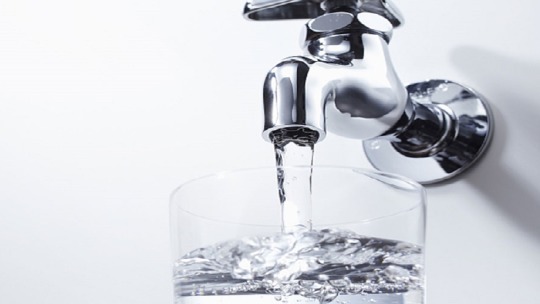
What is boiled water?
Boiled water is almost the water people drink the most in ordinary life, it is light, tasteless, extremely common, but has a very important role in regulating the physiological mechanisms of the human body. Boiling water is a simple but effective way to purify water, both at home and in the field, because the high temperature kills harmful bacteria. Specifically, water boils at 212 degrees Fahrenheit, and most microorganisms cannot survive for more than 30 minutes in water above 160 degrees Fahrenheit. Another benefit of boiling water is that doing so preserves the minerals in tap water.
The differences between tap water and boiled water
Definition&Use
Boiled water means boiling tap water and then cooling it to room temperature. Since boiling water destroys only a small amount of harmful substances, it still retains many microorganisms and minerals. Tap water is the natural water processed by water plant, chlorinated disinfection or purification treatment after chlorinated disinfection for drinking water source. Tap water contains a certain amount of chlorine and heavy metals.
So generally speaking, tap water should be boiled to drink, it is best not to drink raw, and the sediment in the water is because the water treatment plant is the first to add the gum, it can make the impurities in the water to precipitate.

Substance
Tap water generally contains chlorine as well as the filtration of bacteria viruses heavy metals, etc. Because the means of disinfection is not yet perfect, when tap water in the process of disinfection, it is the use of bleach (agent) for disinfection, even try to filter, but there is still a small or trace amount of chlorine (bleach).
Boiled water contains minerals such as magnesium ions, calcium ions, carbonate ions and subcarbonate ions, and boiling can effectively reduce the hardness of water. However, boiling tap water can only kill some bacteria and viruses, but has no effect on heat-resistant bacteria, and boiling for a long time will produce carcinogenic substances, trichloromethane. If you want to filter out the substances more effectively, you could choose some water filter systems, like reverse osmosis system.
How to boil water properly?
Now that we know that boiling water is somewhat healthier than tap water, so how do we properly boil tap water?
First of all, water should be boiled thoroughly before drinking, and we should wait until the water has boiled and then boil it for some time before drinking. Secondly, the time to boil water should not be too long, usually, the time to try to control the boiling water in about five to ten minutes, no more than 15 minutes. Finally, the day the boiled water must be finished that day, because when the water left too long, it will also produce harmful substances.
0 notes